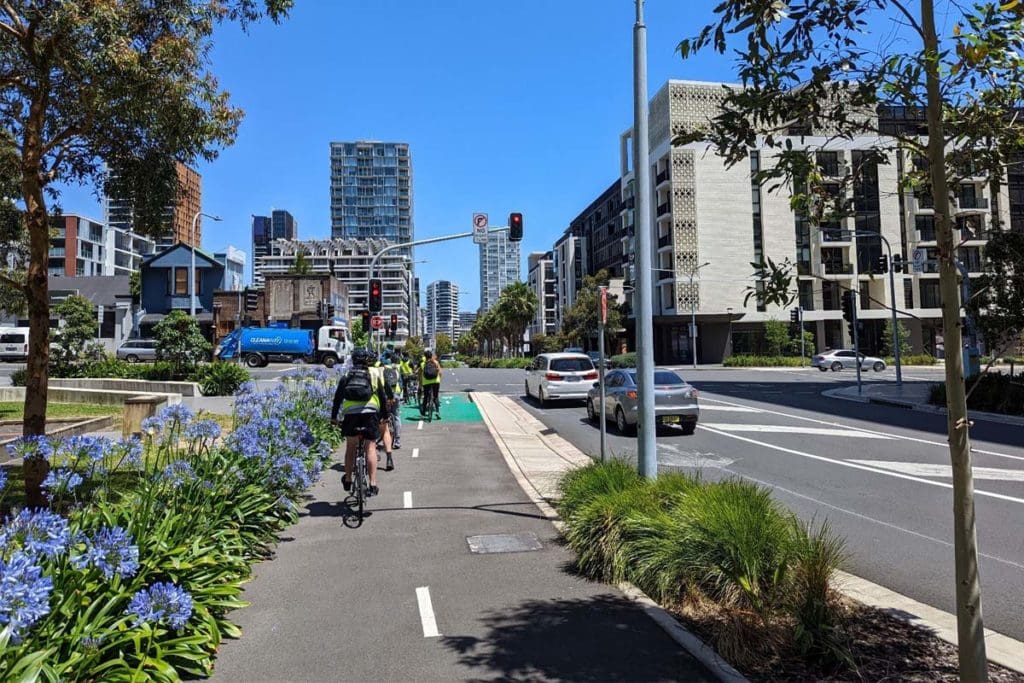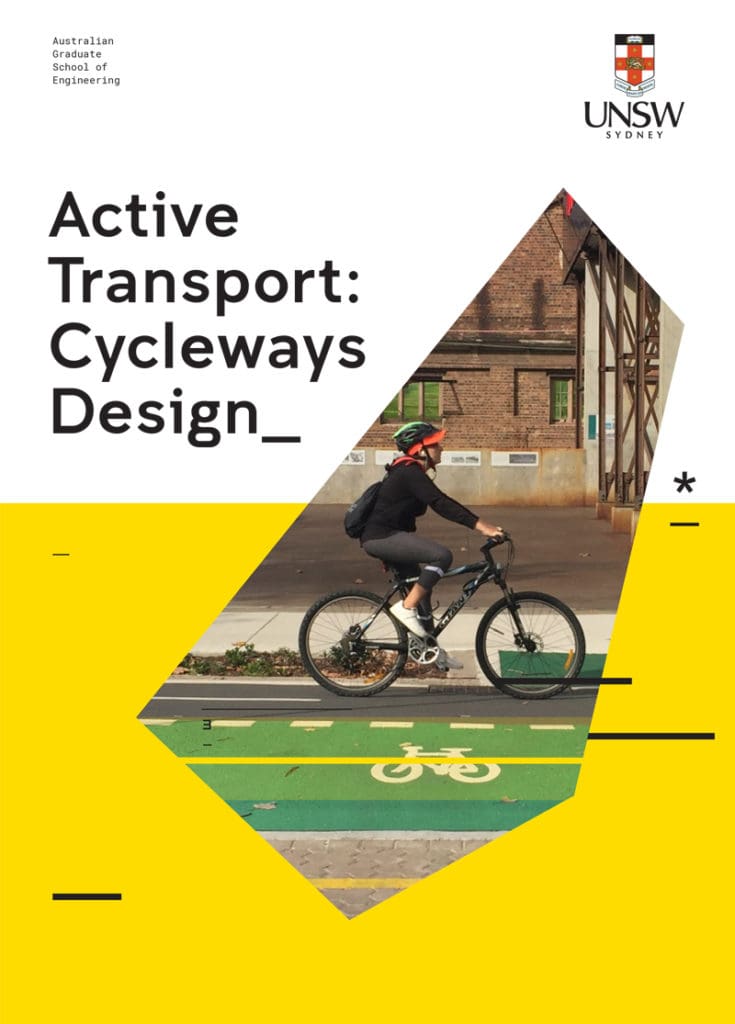Engineering School Puts Infrastructure on Course for Better Cycleways

~ Sponsored Content ~
Cycleway design in Australia will be boosted by a new professional development course launched recently by the University of New South Wales as part of its new Australian Graduate School of Engineering (AGSE).
UNSW recently developed the Active Transport: Cycleways Design course, which is the first of its kind in Australia. It was created for people in local government and the private sector who want to enhance their understanding of cycleway design, the regulations controlling it and the needs of end users.
The need for this course was discussed with NSW Minister for Active Transport Rob Stokes and the City of Sydney Manager of Cycling Strategy, Fiona Campbell, at the recent Thought Leaders Series: The future of active transport in NSW.
The course, held over eight weeks, was run for the first time in late 2022 and all 15 places were snapped up. Following its success, AGSE announced it will run the course again in February and October 2023.
It has opened registrations for both courses, which will also be conducted largely online – apart from a two-day intensive midway through each course.
Both 2023 courses will be capped at similar participant numbers to manage site tours and effective engagement between students and facilitators.

“Active Transport: Cycleways Design will teach participants the intricacies of cycleway design to enable them to oversee projects, design for their own community, or help organisations bid for projects.”
The course is facilitated by one of Australia’s leading authorities on active transport infrastructure, Dick van den Dool, a former manager of traffic and transport at the NRMA, and consultancies Aurecon and Jamieson Foley.
“For years I have co-presented the Transport for NSW training course on Designing for Pedestrians and Bicycle Riders. It’s a great program to introduce our industry to the requirements for people walking and riding bicycles,” Dick said.
“For me, though, it’s always left a gap, a need for more detailed knowledge and insights. The AGSE is helping fill that gap.”
Active Transport: Cycleways Design will teach participants the intricacies of cycleway design to enable them to oversee projects, design for their own community, or help organisations bid for projects.
For seven of the eight weeks, participants attend a 90-minute online session each Thursday, from 5pm to 6.30pm.

On week four, they attend a two-day immersive on the Wednesday and Thursday at the UNSW campus in Kensington.
The intensive days will include group activities and site visits on provided e-bikes to help bring concepts to life.
Participants will work together to develop a cycleway design from a brief, requiring them to consider site constraints, inclusiveness, feasibility and community impacts, while incorporating elements such as intersections, traffic signals, and integration with existing streetscapes.
The two-day immersive in this month’s inaugural course brought a wealth of insight and understanding, according to Dustin ‘Dusty’ Moore from the Department of State Growth in Tasmania.
“These two days in Sydney have given me plenty to bring back to Tasmania to ensure our future bicycle infrastructure is robust and ready, while not letting perfection get in the way of implementation,” he said.

“We collectively have a big job ahead of us in reshaping our cities, and even the cultural biases of our community, to make active transport a viable choice for those that can and want to get around another way.”
Active Transport: Cycleways Design is an early initiative of AGSE, which is also the first of its kind in Australia and was established to address a lack of structured professional development designed directly for engineers.
AGSE is offering Micromobility Report readers a 10% discount off the enrolment fee for the course starting in February.
Readers can redeem the discount by entering the code AGSE10 when they register online.
Click here register or for more information.
Further information about AGSE is also available at the UNSW website.

This is great news, though my in-built wet blanket was immediately critical of the infrastructure in the photo at the top of this article. While by Australian standards it is great infra, there is room for improvement.
– A wider waiting area at the traffic lights for cyclists will allow more cycleway users to quickly pass through on a green light. Space is a scarce resource in Australian cities; yet so much space is given to motorists that gross spatial inefficiencies (ie: painted traffic islands, slip lanes/channelisation, auxiliary through lanes) remain common.
– The agapanthus on the left of the cycleway should have been planted at least a metre away. Cyclists need both handlebar room and shin room. Local councils never have enough resources to pre-emptively trim their city nature bandaids, so plants that are too close to cycleways will forever encroach and degrade the experience of those using the space.
– The edge of the path on the bottom right of the image shows a depressed garden bed, perhaps serving as a swale. Cyclists who wobble may end up with their front wheel in this garden with no chance of recovery. Sloped guttering is needed at the edge of cycle paths to give cyclist a chance of “bounce back” if they accidently ride to the edge of the path at a shallow angle. The height of such guttering needs to be low to eliminate the chance of pedals hitting it too.
– The addition of guttering means storm water drain infrastructure needs to be properly extended to the path.
The list goes on.
Australia doesn’t need to re-invent the wheel when it comes to cycleways. The Dutch have trial and errored things for 50 years now. Last time I crunched the numbers, Dutch cyclists are around 200 times less likely to be involved in a fatal incident compared to Australian cyclists… that’s without anybody over there wearing helmets.
Hopefully participants of the UNSW course are handed out a Dutch cycleways design manual and are told “If we’re not doing it this way then it’s probably wrong”. Given the name of the course facilitator, this may actually be the case 🙂
Thanks for your feedback Gomez.
To confirm your suspicions as his name suggests, the course facilitator, Dick van den Dool, is in fact Dutch – with the accent to prove it!
He was an key presenter at last year’s Micromobility Conference where he repeated one of his favourite sayings when it comes to bike infrastructure design, ‘The devil is in the detail.’
In other words, getting the details right is very important, as you’re also clearly aware, from your detailed critique of the infrastructure pictured in this article.